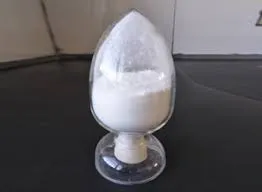Understanding Nonionic Polyacrylamide Applications and Benefits
Nonionic polyacrylamide (N-PAM) is a versatile polymer widely used in various industries due to its unique properties. Composed of acrylamide monomers, the polymerization occurs under controlled conditions to achieve a nonionic form, distinguishing it from its ionic counterparts. The absence of charges in the N-PAM structure makes it particularly valuable in applications where ionic interactions could lead to undesirable results.
One of the primary applications of N-PAM is in water treatment. It serves as a flocculant, aiding in the removal of suspended particles from water. When added to water, N-PAM molecules bridge the gaps between particles, facilitating the aggregation of smaller particles into larger flocs that can be easily removed. This function is crucial in municipal wastewater treatment and industrial processes where high water clarity is required. The use of N-PAM not only improves the efficiency of the treatment process but also minimizes the consumption of coagulants, leading to more sustainable practices.
In addition to water treatment, N-PAM is extensively utilized in the agricultural sector. It is used to improve soil structure and moisture retention, which is essential in arid and semi-arid regions. When N-PAM is applied to the soil, it helps to reduce erosion and enhances the soil's ability to retain water, allowing crops to thrive even under less-than-ideal rainfall conditions. This property is particularly beneficial for farmers looking to increase crop yields without excessive irrigation, contributing to sustainable agricultural practices.
nonionic polyacrylamide

Another notable application of nonionic polyacrylamide is in the field of oil recovery. In enhanced oil recovery (EOR) processes, N-PAM serves as a viscosifier, helping to improve the efficiency of oil displacement. By increasing the viscosity of water injected into oil reservoirs, N-PAM can help push more oil towards production wells, thereby increasing overall output. This application not only boosts oil production but also optimizes resource extraction processes, making them more effective.
Furthermore, N-PAM finds its utility in the mining industry, where it acts as a flocculant in mineral processing. It aids in the separation of valuable minerals from ores, contributing to higher yields and better quality in mineral extraction processes. The use of N-PAM in this context reduces the need for harsh chemicals, promoting a more environmentally friendly approach to mining.
Despite its numerous advantages, handling N-PAM requires caution due to the potential health risks associated with acrylamide, a known neurotoxin. Adequate safety measures, including the usage of personal protective equipment (PPE) and strict adherence to handling protocols, are essential to mitigate risks during production and application.
In summary, nonionic polyacrylamide is a multifaceted polymer with extensive applications across various industries, including water treatment, agriculture, oil recovery, and mining. Its unique properties, such as nonionic behavior and ability to facilitate flocculation, make it an indispensable tool in promoting efficiency and sustainability. As industries continue to seek eco-friendly solutions, the demand for nonionic polyacrylamide is expected to grow, highlighting the need for ongoing research and development to enhance its applications while ensuring safety and environmental protection.

